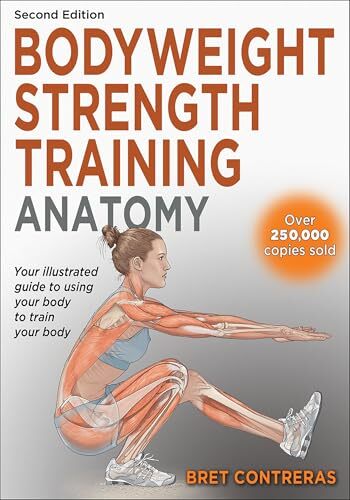
The good
-
An excellent, comprehensive list of bodyweight exercises that covers every part of the body. I was especially impressed with the variety of lower body exercises (often a weak point of bodyweight training books), the discussion of different types of core training (i.e., static, dynamic, inner, outer, etc.), and the list of “whole body” exercises and metabolic training at the end (e.g., burpees, muscle-ups).
-
Includes a great overview of training principles such as periodization, volume, exercise selection, etc. Most books jump straight into routines, without teaching these fundamentals, so novice trainees don’t know why a routine is designed the way it is, so when they tinker with it, they usually make it worse.
-
The book also includes decent pre-designed routines at the end.
-
Cool diagrams that show how the human anatomy works during certain exercises. Biology is amazing.
-
Even though this is a book on bodyweight training, the author doesn’t pretend that bodyweight training is the only game in town or superior to other types of training in every way. Instead, he presents it as a set of tools you should add to your fitness tool belt.
The not so good
-
The descriptions and diagrams of some the exercises don’t always provide enough details, nuance, or cues to effectively explain how to execute the exercise safely and efficiently.
-
The progressions for different exercises are also a bit light on detail. E.g., I would’ve liked to have seen guidance such as “when you can do X reps of knee push-ups, switch to the classic push-up; when you can do X reps of classic push-up, move up to assisted one-arm push-up; etc.”
-
Not a very “motivating” book. After I read You Are Your Own Gym I really wanted to try all the exercises and incorporate more bodyweight training into my routine. After reading this book, I feel like I learned a lot, but wasn’t particularly motivated to do anything with it.
-
Minimal diet advice.
-
The book is a bit sexist. E.g., In the discussions of why you should train each body part, you often hear about how men should do it because that body part is important in, for example, football, olympic weightlifting, and powerlifting, whereas women should do it because it’s useful for ballet and looking attractive. Apparently, women can’t participate in football, weightlifting, or powerlifting, and should only train to look pretty?
Overall
A solid resource for getting into bodyweight training.
